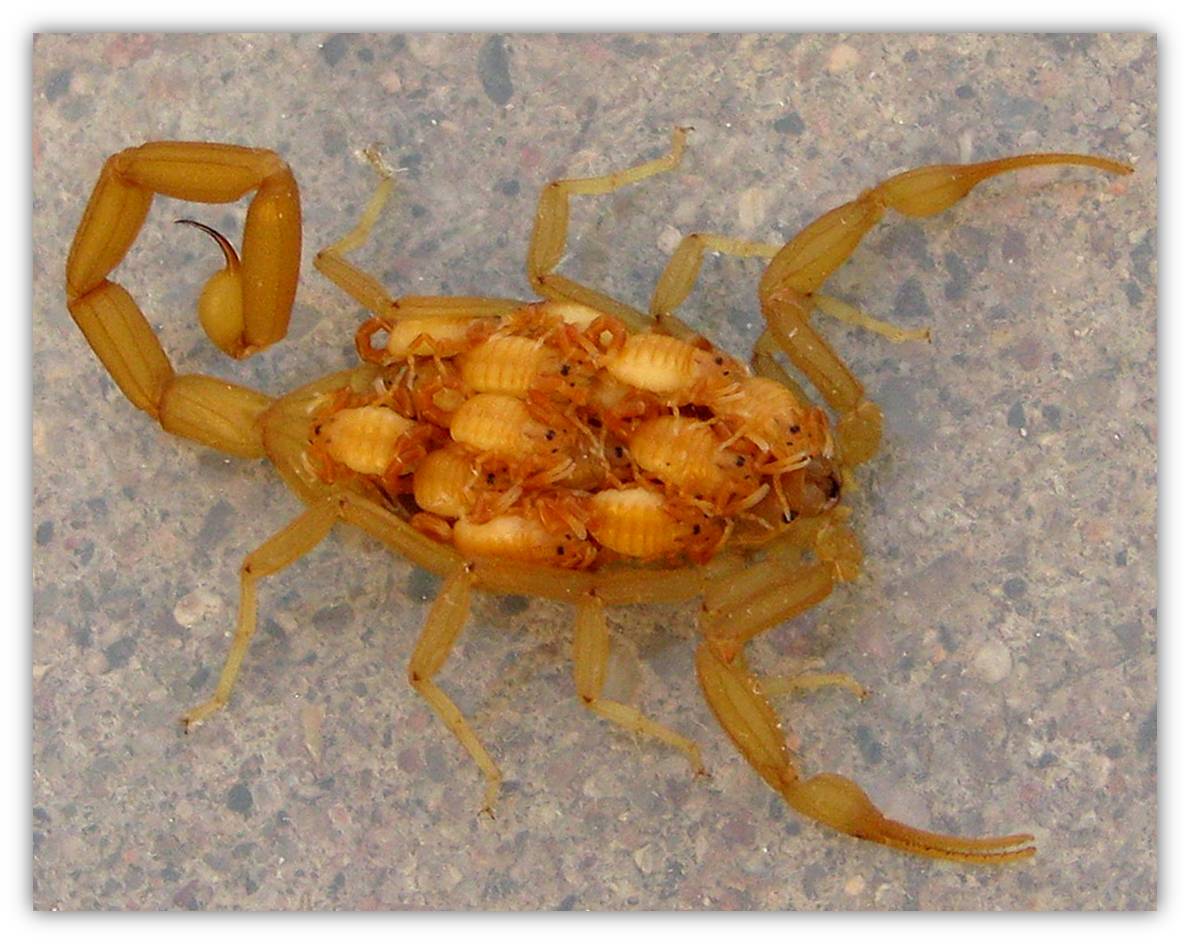
• The Scorpion doesn’t have good vision in spite of the fact that it has so many eyes. They have at least 6 but they can have as many as 12.
• The Scorpion has a very good sense of smell. They use it to find food and to hide from danger.
• They rely on vibrations from their surroundings to help them determine what is taking place in their environment.
• It is true that a Scorpion is able to tell the difference between light and dark.
• Young Scorpions ride on their mothers back for the first weeks of life.
• The average lifespan in the wild for the Scorpion is 2 to 10 years. Some have lived as long as 25 years in captivity.
• There is fluorescent in the Scorpion that is believed to be part of the molting process.
• All Scorpions are venomous. Only about ¼ of them have a type of venom that is potent enough to make someone very ill or to kill them.
• Antarctica is the only place on Earth where you won’t find the Scorpion living.
• The Scorpion loves to live around rocks, sand, and trees. However, they are very adaptable and have been found living in some very unusual places.
• The oldest artifacts of Scorpions date back 430 million years.
• Some species of Scorpions can live for up to a year without any food or water.
• Not all of them live in the hottest regions. There are some species which successfully live in the colder areas where it can freeze.
• They are nocturnal and will usually stay in holes or under rocks during the day.
• They are extremely sensitive to light so they aren’t going to be out roaming around in the sun.
• Scorpions can only consume a liquid diet. The venom they inject into prey allows the insides to be turned into liquid that they suck out.
• Sometimes the females will consume the males after mating if he doesn’t move quickly.
• The young are called Scorplings. They will stay with their mother until they complete their first molt.
• The nearly born young Scorpions also contain venom. The mothers may sometimes consume their young.
• The females are typically larger than the males of the same species.
• The most dangerous Scorpion species is the Arizona Bark Spider which is also called the Bark Scorpion.
• Scorpions tend to live in areas that are from 67 degrees Fahrenheit to 98 degrees Fahrenheit.
• They are closely related to ticks, mites, and spiders.
• They get most of their water from prey but they have been seen drinking plain water from time to time.
• Scorpions need soil around their living environment so that they can thrive.
• The range in size from ½ inch to 7 ¼ inches.
• Each species of Scorpion has its own type of venom which is why the toxicity levels vary.
• They don’t have bones. Instead they have an exoskeleton that is made out of the same substance as human fingernails.
• There is only an anti-venom for treatment with certain types of Scorpions.
• Migraine headaches that last for a week or longer can be the result of the after effects of a dangerous Scorpion sting.
• Bark scorpions will glow a green color (fluoresce) under ultraviolet light.
• This is the only species of scorpion in Arizona that is truly considered as life threatening.
• Scorpions give birth to live young during the summer months. The babies will crawl up their mother's pincers and legs to get on her back. They will ride around on her back until they molt in 7-21 days.

Contact Lady Bug Pest Control Specialists for a Free Home Inspection for Termites, Eco-Friendly Pest Control, Home Seal Service, Bed Bug Eco-Heat, and Rodent Control. We perform Complete Home Inspections. Lady Bug also will do a free inspection if you already are under contract with another company and take over your existing termite warranty policy.
Please feel free to contact Lady Bug Pest Control Specialists to answer any of your pest control questions or for a FREE Inspection at 480-833-1111.







